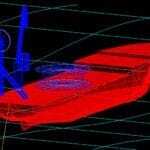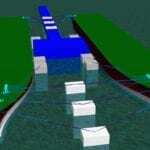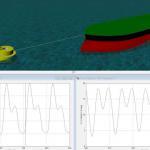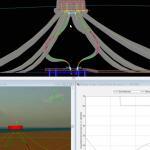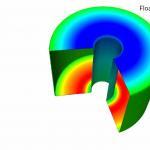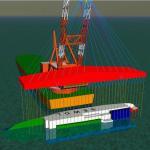[Posted on December 8th, by Bil Stewart]

Cable dynamics may not be something you think of when you talk about going out on an oil rig. Any time you are on the water with an anchor, drilling equipment, or anything else, you have to look at the dynamics of a cable because there are various factors that need to be considered.
Decoupling Deep Ocean Cable Dynamics
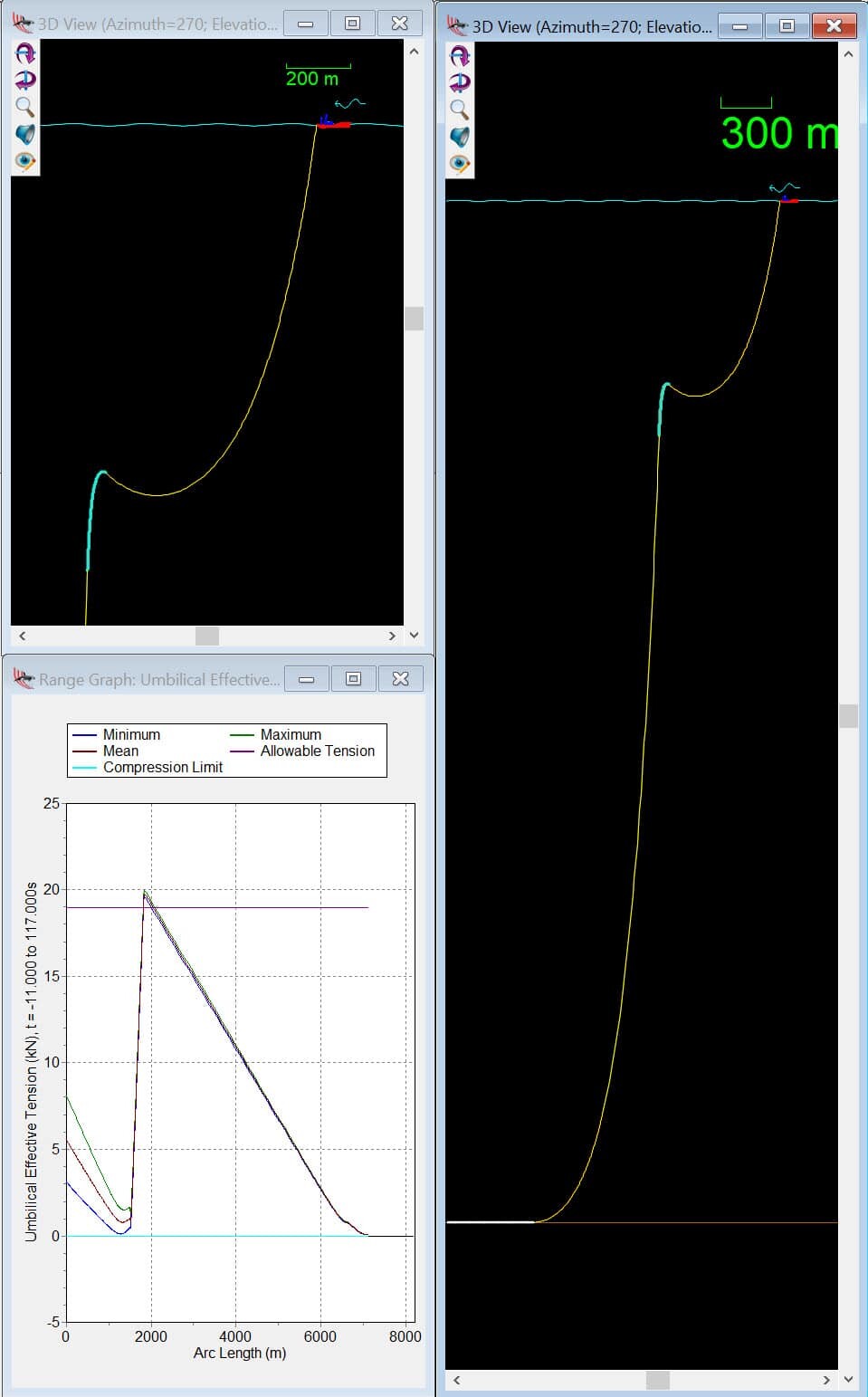
Above figure shows lazy-wave geometry for a Tyco SL14 SPA cable in 6000 meters water depth for US Navy application. Cable floats have been designed by STA for a section (shown blue) and analyzed in OrcaFlex in a sea state 6. The tension range at the top end is low and easily tolerable. The tension range at the touchdown has been reduced to less than 1 kN.
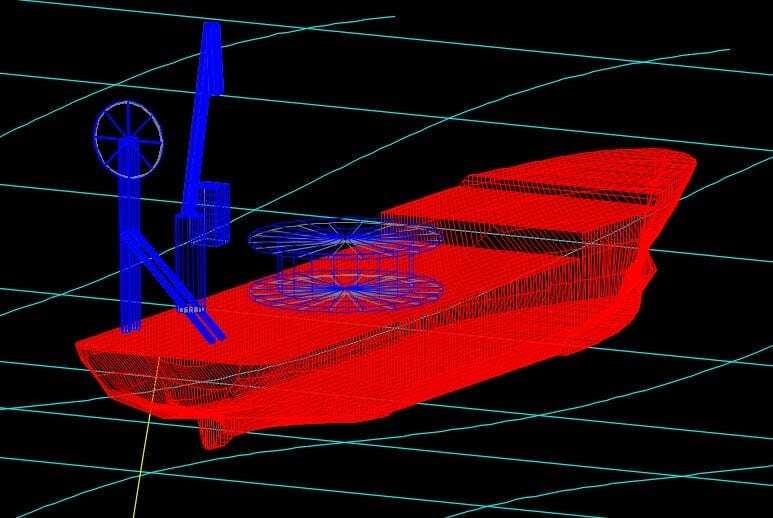
Cable laying and support vessel in OrcaFlex, shown above.
There are going to be cables connected to your rig. They go up and down as the water goes up and down. When you are drilling, you have to consider the depth of the sea. It is very much like an anchor. An anchor is only going to be effective if it is able to reach the bottom. Otherwise, it is simply going to dangle from the boat and cause you to drift. The anchor is therefore not as effective as it could be and all because you were unprepared for the depth of water that you would be in. the same goes for the cables. Understanding depth is vital to the success of your project.
Waves
The physics of waves should be explored in depth when you’re going to be out on the water. You need to know when they are going to occur, where, the height of the waves, and more. All of these are going to play a role in the equipment you choose and the training you give your employees. Failure to recognize the importance of waves can result in problems on the water – and you could end up injuring someone or destroying a part of the rig.
Movement on the Rig
There’s going to be movement on the rig due to all sorts of factors – wind, weight of what’s on the surface, and even movement of employees. These are going to be factors when calculating the cable dynamics.
Overall Stability
Stability is critical and when you’re on a rig or even fishing, there are going to be cables or other lines in the water and then connected to your boat or rig. When working with steel catenary risers, they are responsible for the fluid transfer from one area to another. If the cable dynamics haven’t been explored to the fullest, the transfer could be broken simply because of one variable that was missed during the setup, such as bigger waves or deeper water.
Accident Prevention
It’s important to prevent accidents and when you are dealing with being on a rig that could be on the water for months at a time, you have to think about everything. The more you know about potential accidents on the water, the more you can prepare your employees for what could happen. Having analysis at your fingertips as to what you could experience can be invaluable when you are looking to train employees, purchase equipment, and stock the rig before leaving the shore.


